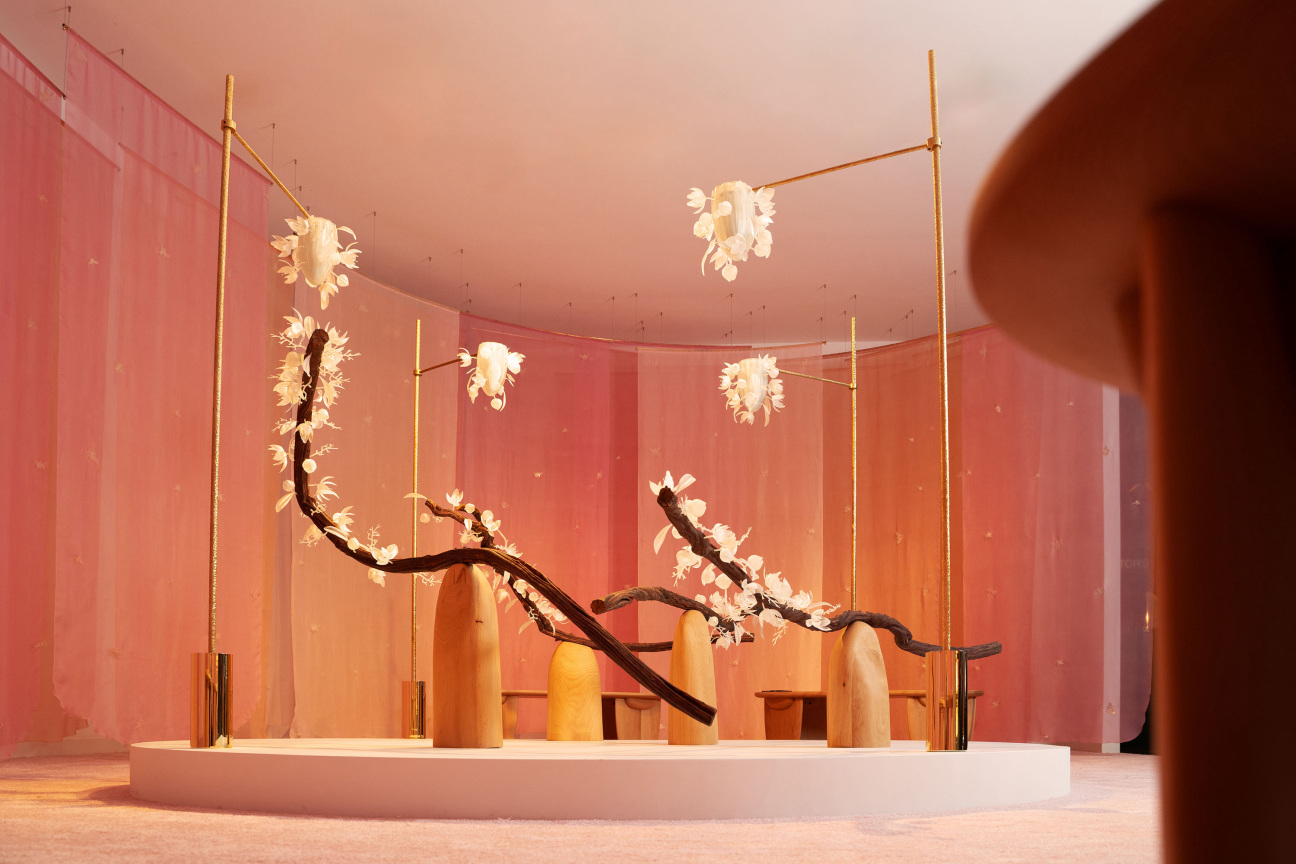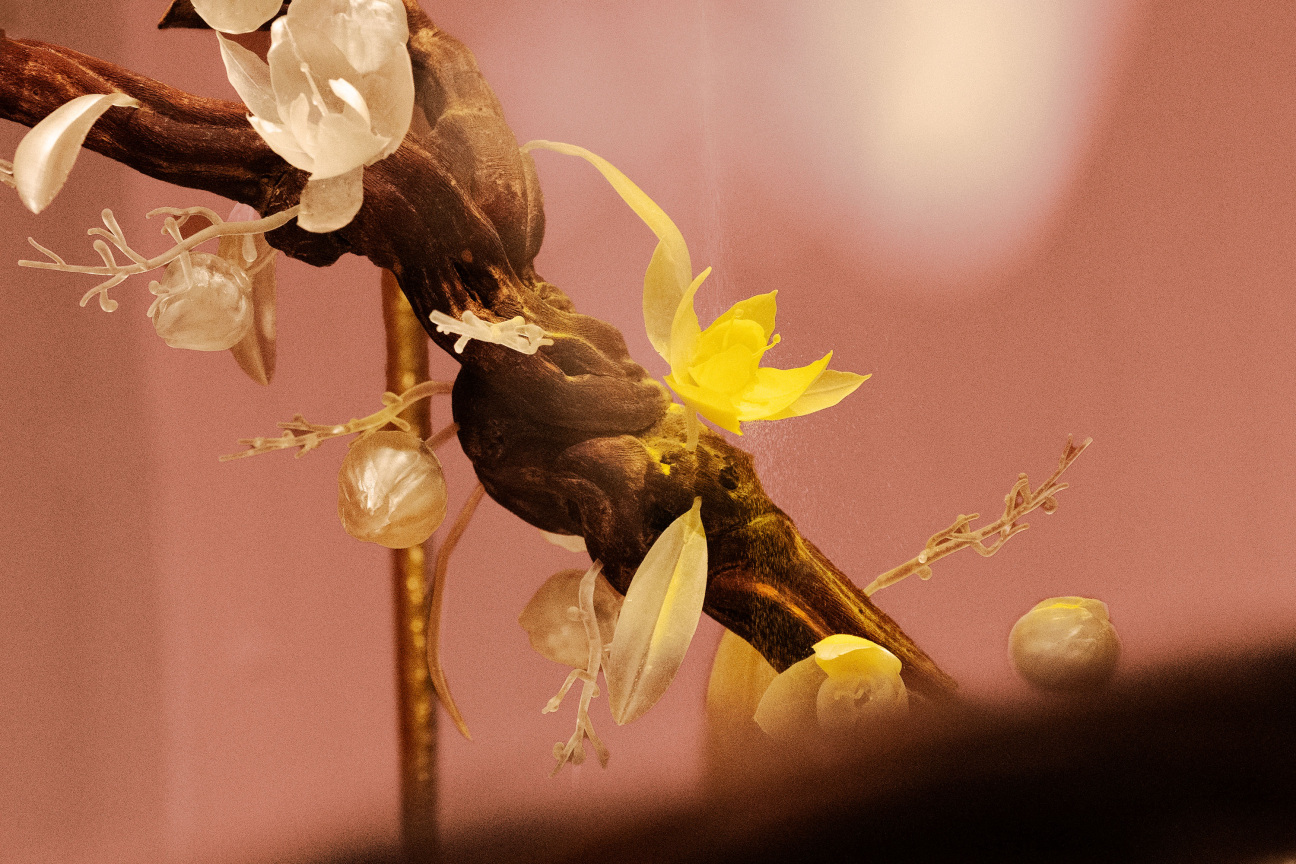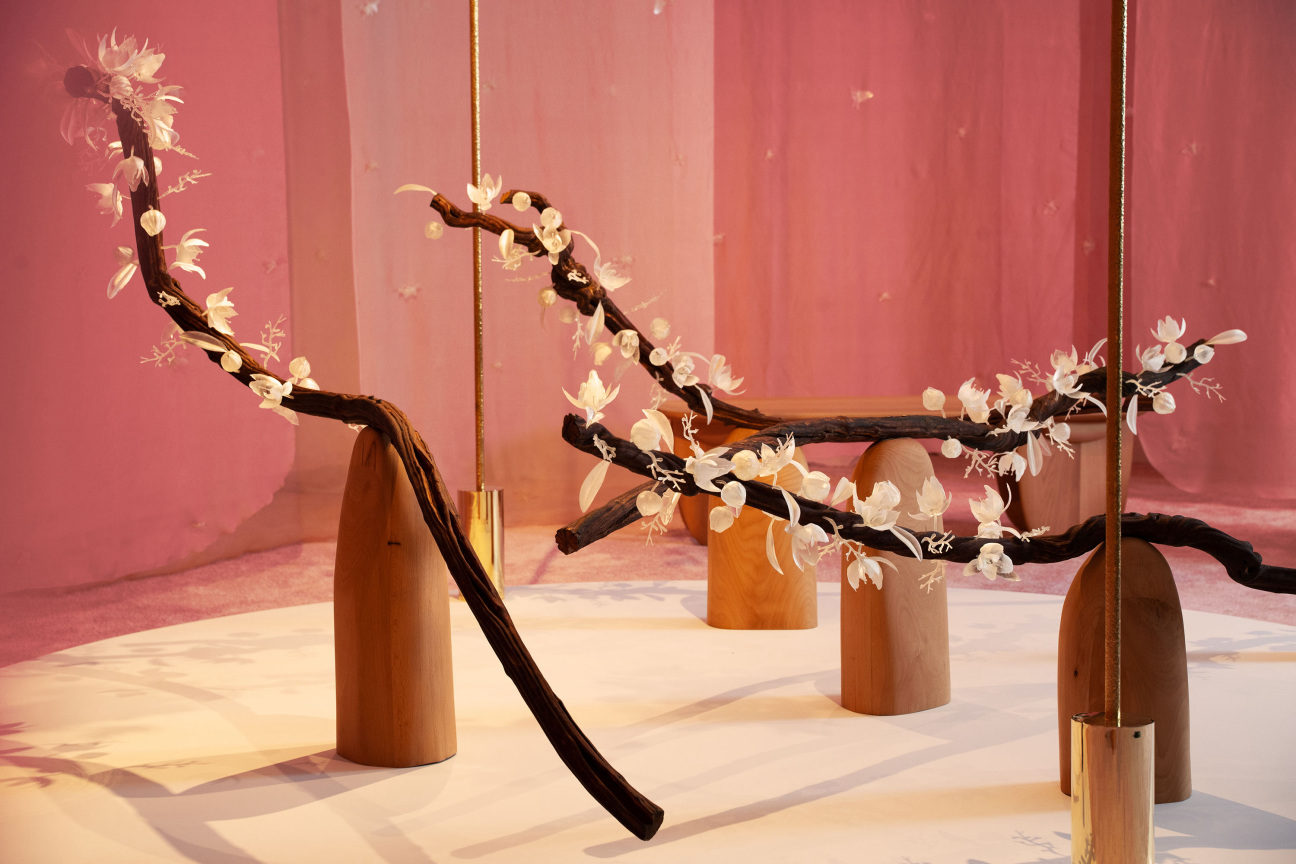
Mexican designer Fernando Laposse devised the idea for his recently unveiled project with Perrier-Jouët after a walk through the fields. While visiting the grounds of Maison Perrier-Jouët’s headquarters in Épernay, located in the Champagne region of France, he was struck by the diversity of native insects swarming the vines.
“They’ve recently switched their fields to a permaculture system,” explains Laposse. “Which means planting wildflowers and wild plants among the vineyards. It was something that was a norm [over] 100 years ago, but then in the 20th century it was decided to get rid of all that.” Repopulating the surrounding ecosystem with a host of local flora, Laposse continues, encouraged the insect population to explode—an integral element of natural pollination.
It’s this notion of natural pollination that inspired Laposse to create "The Pollination Dance," a project for the French champagne house debuting this week at Design Miami. The installation takes the form of winding vines interspersed with delicate flowers that resemble frosted glass. Sheaths of fluttering pastel organza silk surround the space, adorned with insects pulled from Laposse’s imagination.

Laposse’s is the latest in a long line of Perrier-Jouët’s artistic collaborations during Design Miami, which has included designers like Bethan Laura Wood, Glithero, and Analogia Project, all of whom have explored the intersection of art and nature—important elements of the brand's ethos.
“What you see here is a fantastical garden, where you have pollinators flying all around you as if it were the first moments of spring,” reveals Laposse. “They're coming to meet these flowers filled with pollen—the pollen represents the passage of time.” Indeed, the entire installation is founded on this notion of passing time.
Throughout the week, a pair of docents will pour bright yellow sand through the suspended floral sculpture, sprinkling the vines below with glittering dust that will slowly build up day after day like an hourglass. “It represents time, marked by the seasons and contained in the liquid,” says the designer, referring to the aging process involved in producing Perrier-Jouët’s champagnes. “It's incredible to think of it as bottled time.”

To produce the installation, Laposse kept as close to the project's ethos as possible, meaning that insects played a vital role. “All the silks are organza, which comes from the silkworm, while the dye comes from cochineal,” he explains. “These bugs only live for about a month. Once they die, you can crush them into a powder that generates a super intense red pigment.”
Laposse also used a natural orange pigment derived from marigolds, the same flowers used to decorate Day of the Dead altars in Mexico. The flower sculptures themselves were 3D printed using soy starch resin, which Laposse describes as a departure from his usual work. “I've always tried to avoid too much digital manufacturing,” he says. “In this case, it really worked. The finesse of the material almost looks like glass.”
This focus on nature has long been a central tenet of Laposse’s practice—his work has explored the intersections between ecology, social justice, and innovation through projects that highlight the exploitative nature of avocado farming and the development of sustainable materials. But this time, the designer opted to emphasize a different facet of the natural world: it’s spontaneity. “It’s capturing a moment of joy,” he says.










 in your life?
in your life?

